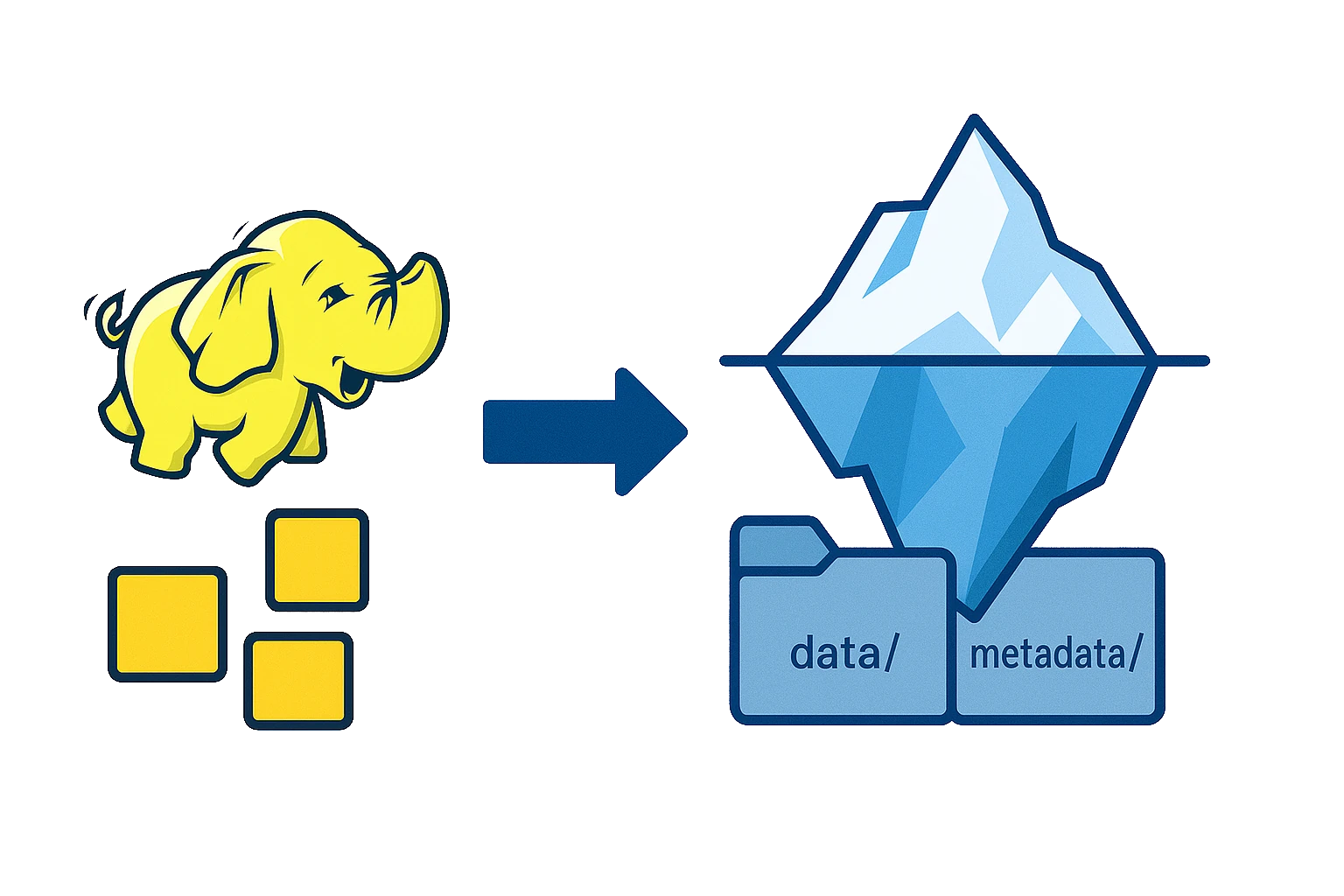
Why Switch from Hadoop to Iceberg
Written by Javier Esteban · 14 June 2025
In this article we set out the reasons why Iceberg tables out-perform traditional Hadoop-style tables. We begin with a quick tour of how Iceberg works, then outline the advantages and finish with a side-by-side comparison.
How does Iceberg work?
An Iceberg table is made up of two main folders:
/my_table/
│
├── data/ ← ✅ Parquet (or ORC / Avro) files – the actual data
│
└── metadata/ ← ✅ All structured table metadata
- data/ holds the columnar files just as a Hive table would.
- metadata/ is what sets Iceberg apart. It contains:
| File / directory | Purpose |
|---|---|
| metadata.json | Control file: schema, partitions, properties and the snapshot ID currently in use |
| snapshots/ | One .avro file per write-operation, each describing the full state of the table at that moment (perfect for roll-backs) |
| manifest-list | A list of all manifests referenced by a snapshot |
| manifest | Avro index files listing the Parquet paths, row counts, column stats, etc., for a group of data files |
A write operation step-by-step
- Parquet files are written.
- New manifests are generated to describe those files.
- A new manifest list is produced, combining the new and existing manifests.
- A new snapshot is written, pointing at that manifest list.
- metadata.json is updated to reference the new snapshot.
How does this improve on Hadoop?
When a query engine such as Trino reads an Iceberg table it:
- Opens metadata.json to discover the current snapshot.
- Reads only that snapshot’s manifest list.
- Loads the manifests in that list.
- Touches only the Parquet files whose statistics show they contain rows relevant to the query.
If the query filters on WHERE year = 2023 and a manifest says its file contains only year = 2022, that file is skipped entirely. Hive, by contrast, must enumerate every folder and file before filtering, an expensive and slow operation. Iceberg’s centralised metadata brings instant file-pruning and adds snapshot roll-backs that Hadoop cannot offer.
Simplified visual summary
| Feature | Traditional Hadoop | Apache Iceberg |
|---|---|---|
| Metadata | External, sparse | Internal, detailed & versioned |
| Consistency | Not guaranteed | Snapshot atomicity & time-travel |
| Pruning | Limited | Column stats for fast pruning |
| Schema / Partition changes | Rigid, painful | Flexible evolution, no re-processing |
| Versioning | Absent | Snapshots & roll-back |
| Cloud-friendly | Limited | Designed for object storage |
Need training on Iceberg tables or help applying them to your data-lake? Get in touch and one of our experts will contact you.
Not quite ready for a consultation?
Drop us a message, and we'll respond with the information you're looking for.